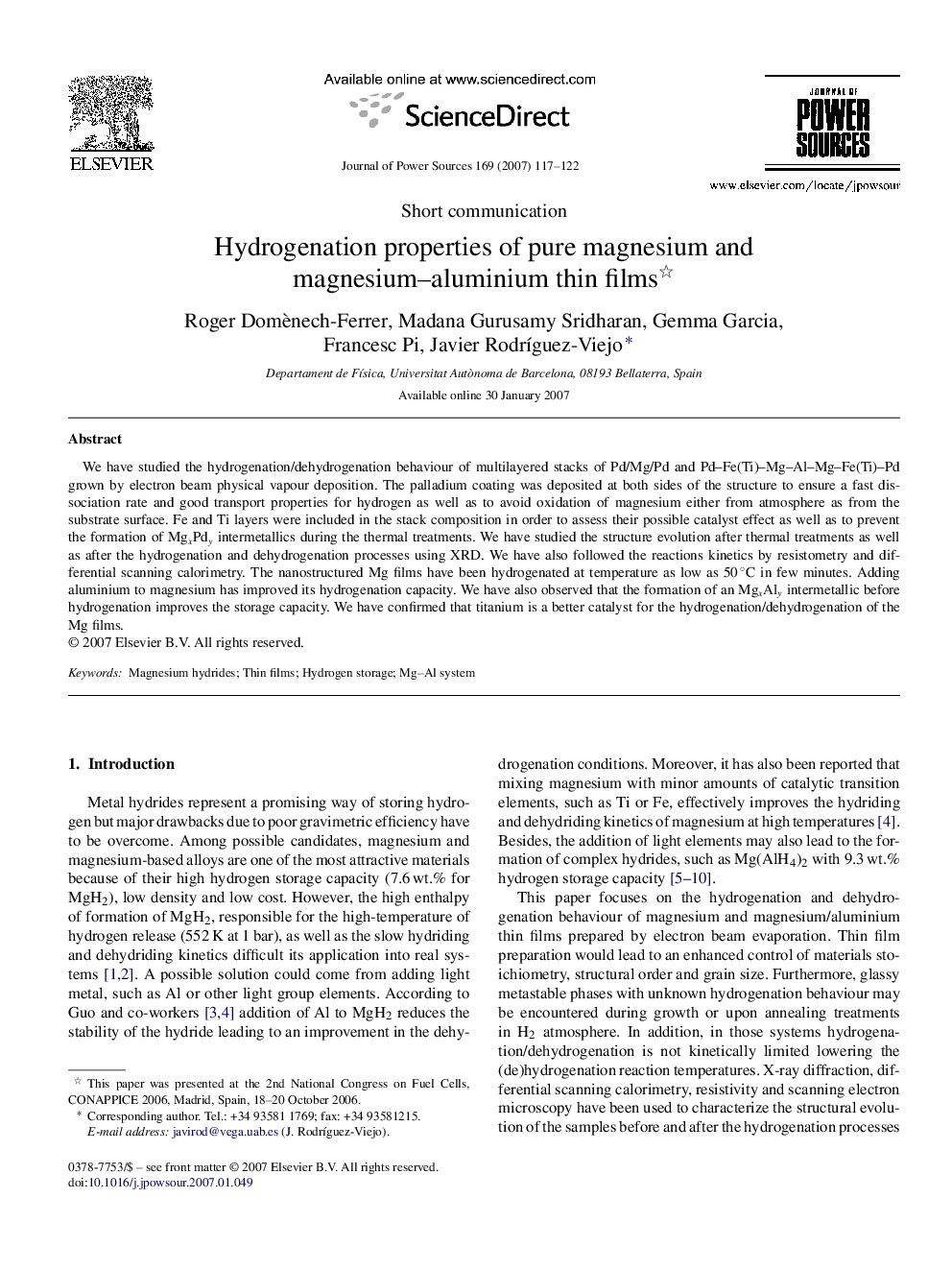| Article ID | Journal | Published Year | Pages | File Type |
|---|---|---|---|---|
| 1291762 | Journal of Power Sources | 2007 | 6 Pages |
We have studied the hydrogenation/dehydrogenation behaviour of multilayered stacks of Pd/Mg/Pd and Pd–Fe(Ti)–Mg–Al–Mg–Fe(Ti)–Pd grown by electron beam physical vapour deposition. The palladium coating was deposited at both sides of the structure to ensure a fast dissociation rate and good transport properties for hydrogen as well as to avoid oxidation of magnesium either from atmosphere as from the substrate surface. Fe and Ti layers were included in the stack composition in order to assess their possible catalyst effect as well as to prevent the formation of MgxPdy intermetallics during the thermal treatments. We have studied the structure evolution after thermal treatments as well as after the hydrogenation and dehydrogenation processes using XRD. We have also followed the reactions kinetics by resistometry and differential scanning calorimetry. The nanostructured Mg films have been hydrogenated at temperature as low as 50 °C in few minutes. Adding aluminium to magnesium has improved its hydrogenation capacity. We have also observed that the formation of an MgxAly intermetallic before hydrogenation improves the storage capacity. We have confirmed that titanium is a better catalyst for the hydrogenation/dehydrogenation of the Mg films.
